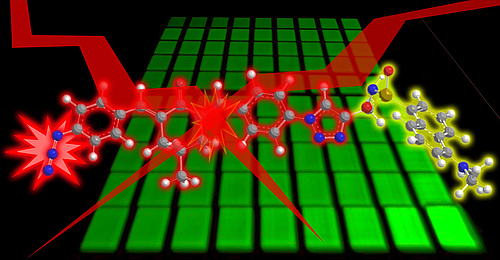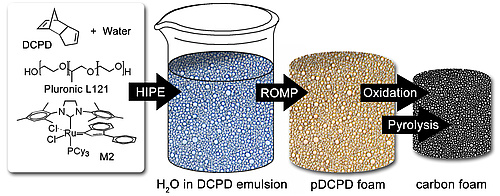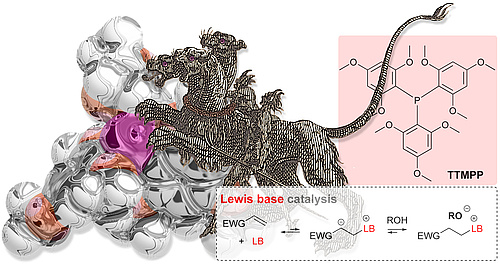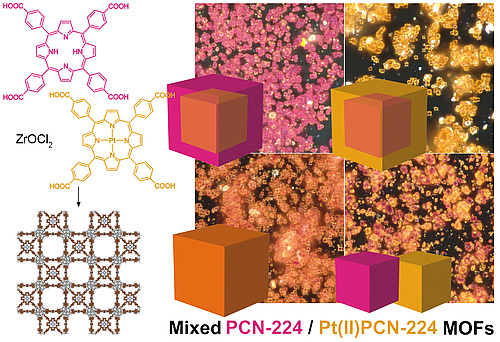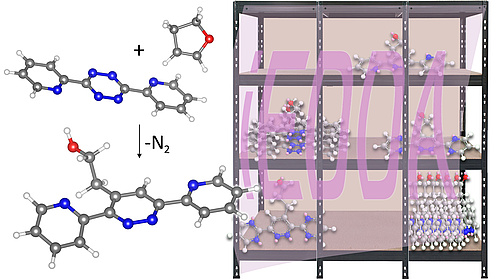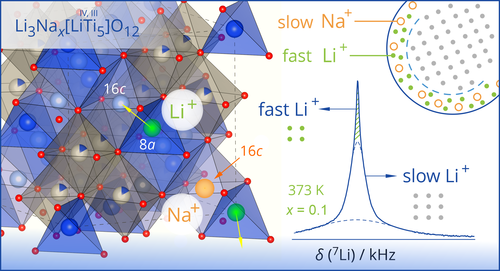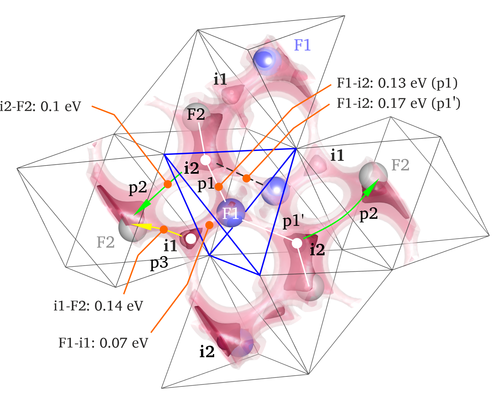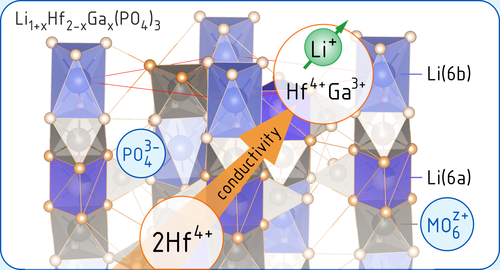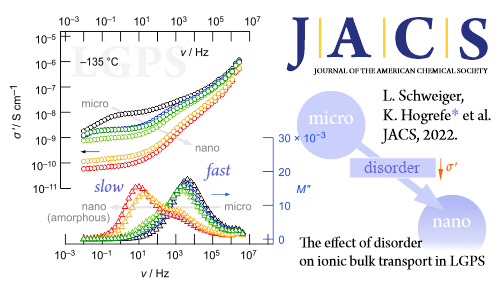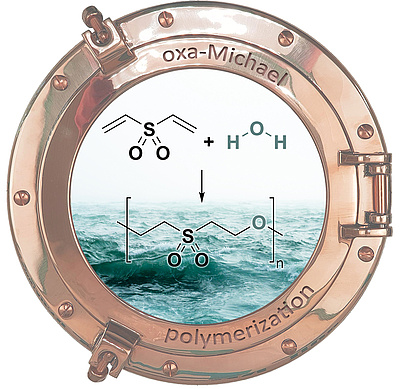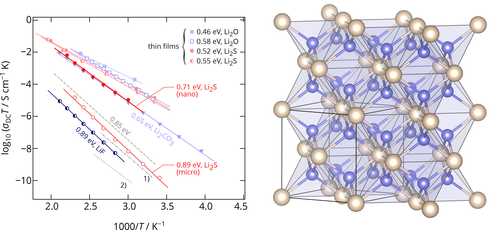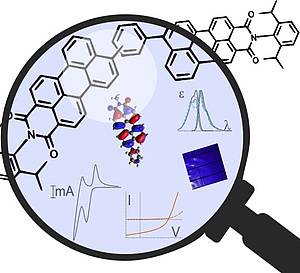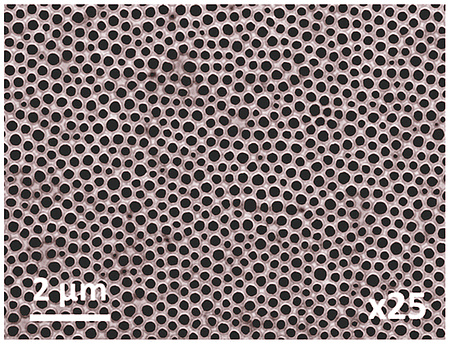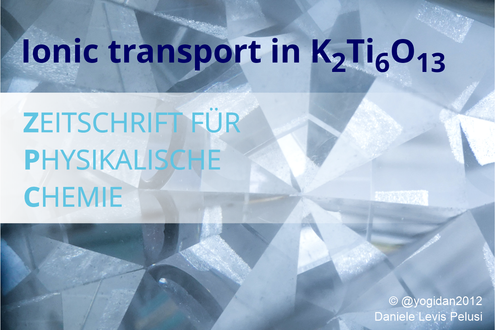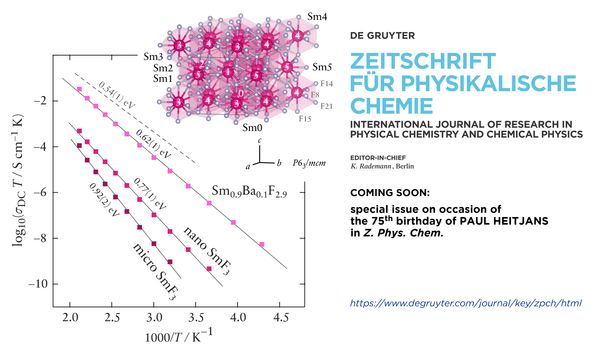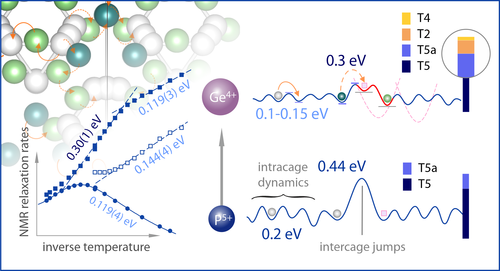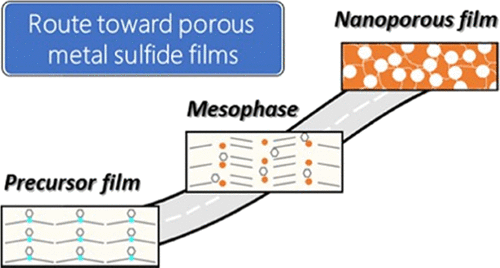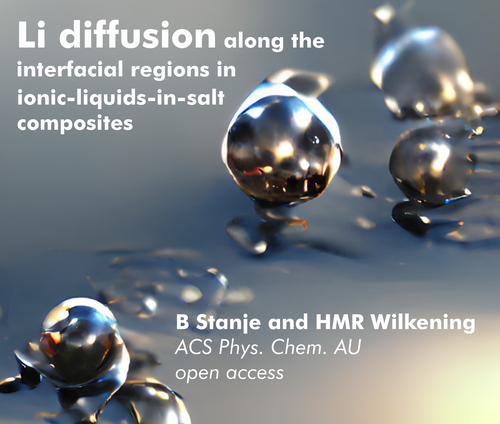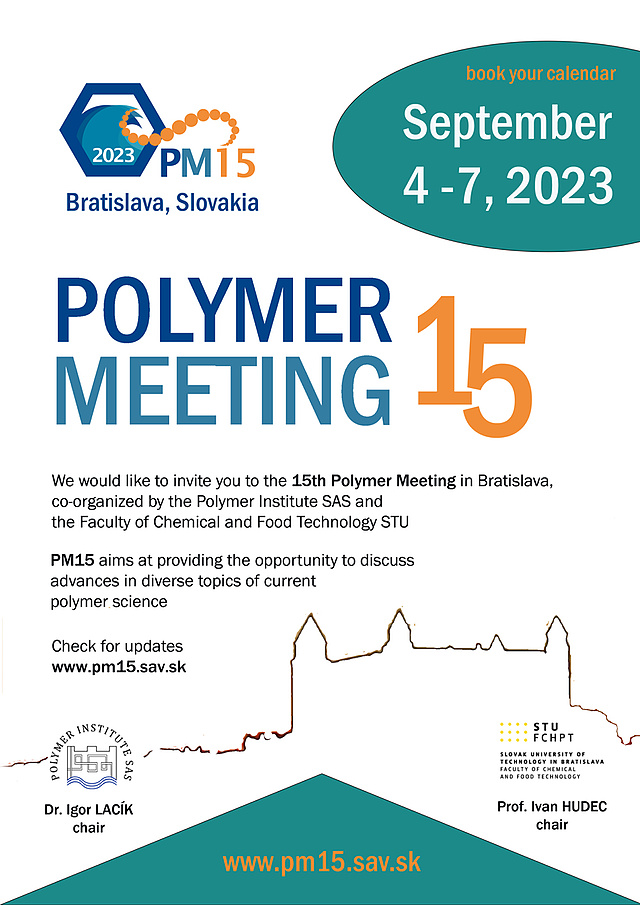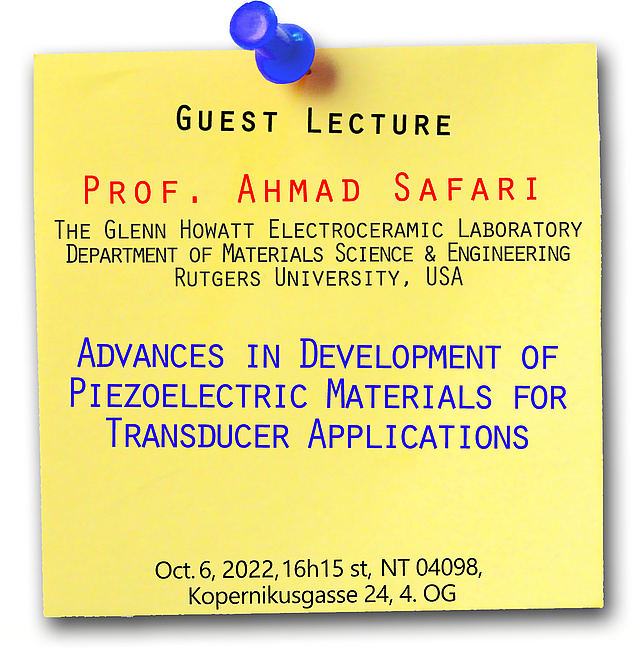
 Fluorescent azide reagent for two-photon grafting
Fluorescent azide reagent for two-photon grafting
In a collaborative work of researchers from the Guangdong University of Technology (China), the Semnan University (Iran) and the Vienna University of Technology (Austria) a work on 3D-fluorescence-labeling of swellable polymers is disclosed in Monatshefte für Chemie. More specifically, the synthesis of two dye-labeled azides via de-symmetrization of 2,6-bis(4-azidobenzylidene)-4-methylcyclohexanone (BAC-M) with a copper(I)-catalyzed alkyne-azide cycloaddition (CuAAC) using fluorescent dyes is reported. An alkyne functionalized dansyl derivative and an alkyne functionalized perylene diimide derivative were used as the dyes. The photo-physical properties of these dye dyads are described, and their performance in multi-photon grafting onto polyethylene glycol-based hydrogels is investigated. While the dansyl-conjugated BAC derivate is well suited for two-photon grafting with lasers operating at 800 nm, the perylene diimide-bearing dye does not give the desired result.
 Carbon foams from emulsion templated poly(dicyclopentadiene)
Carbon foams from emulsion templated poly(dicyclopentadiene)
A team of researchers from National Institute of Ljubljana, Varta Innovation GmbH, Institute of Science and Technology Austria and ICTM showed that Ring-opening Metathesis Polymeriziation derived poly(dicyclopentadiene) foams are ideal precursors for the preparation of hierarchically porous carbon foams. The unique feature of the foams is that fixation necessary to retain the foam’s structure during the carbonization step is performed at very mild and sustainable conditions (oxygen from air, 40 °C). Upon carbonization foams with a carbon content higher than 97 %, an electronic conductivity of up to 2800 S·m–1, a Young’s modulus of up to 2.1 GPa, and a specific surface area of up to 1200 m2·g–1 were obtained. The 3D interconnectivity of the macroporous precursor foams was fully preserved and carbon foams with average void diameters between 87 and 2.5 μm can be prepared. Finally, the carbon foams were applied as porous cathodes for Li–O2 batteries. The favorable combination of active surface area and macropore sizes led to outstanding discharge capacities 10 fold higher than obtained with Super P based cathodes.
 A "Lewis base beast" for catalysing oxa-Michael reactions
A "Lewis base beast" for catalysing oxa-Michael reactions
During her quest for the best catalysts for oxa-Michael polymerisation, Susanne Fischer from the Christian Doppler Laboratory for Organocatalysis in Polymerisation uncovered the strong Lewis base tris(2,4,6-trimethoxyphenyl)phosphine (TTMPP) as an exceptional catalyst for this transformation. The commercially available and fairly airstable phosphine performs similarly to the state of art in the field, the phosphazene base P2-tBu (a very strong Brønsted base) under solvent-free reactions. In contrast to P2-tBu, the activity of TTMPP significantly drops upon dilution of the reaction mixture, what is characteristic for Lewis base catalysis and makes it particularly interesting for polymerization reactions. Indeed, TTMPP was found to be the first Lewis base capable of catalysing the oxa-Michael polymerisation of diacrylates and diols. Read all about the "Lewis base beast" TTMPP in Catalysis Science and Technology.
 Probing the core of MOFs
Probing the core of MOFs
In the framework of the TU Graz lead project “Porous Materials@Work” research tackling the question whether only the surface or also the inner parts of luminescent metal-organic frameworks (MOFs) crystals are available for photochemical transformations was conducted. This research now resulted in a publication in Journal of Materials Chemistry C. Tobias Burger and coworkers prepared core-shell and multivariant MOFs of the PCN-224 type using metal-free, fluorescent and platinated, phosphorescent porphyrin ligands. Probing these MOFs with luminescence quenching upon exposure to oxygen reveals efficient gas transport into core of the MOFs. Above that, the mixed luminescent MOFs are characterized by undesirable energy transfer processes resulting in diminished contribution of the phosphorescence component in all MOFs including both ligands within the same crystals. Only the physical mixture of MOF-crystals individually prepared from the fluorescent and the phosphorescent porphyrin allows for fostering the full oxygen-sensing potential of these materials.
 iEDDA with cyclic enol ethers
iEDDA with cyclic enol ethers
Inverse electron demand Diels–Alder additions (iEDDA) between 1,2,4,5-tetrazines and suitable unsaturated dienophiles such as olefins, alkynes or enol ethers provide facile access to pyridazines. Recently work from alumnae Bettina Schafzahl and Astrid C. Knall on the use of cyclic enol ether derivatives for preparing pyridazines bearing 2-hydroxyethyl, 3-hyproxypropyl and 3-oxopropyl substituents at the 4 position has been published. Furthermore, second order rate constants for the reactions with 2,3-dihydrofuran, 3,4-dihydro-2H-pyran and 2-methoxy-3,4-dihydro-2H-pyran are presented and reveal cyclic enol ethers as more reactive alternatives to the respective alkynes.
 Na-ion batteries: Fast interfacial ion dynamics in LTO
Na-ion batteries: Fast interfacial ion dynamics in LTO
J. Physics: Energy: We probed rather fast Li and Na exchange in the solid solutions of sodiated Li4NaxTi5O12 (LTO). LTO is one of the most important anode materials guaranteeing extremely stable cycling conditions. While Na(23) NMR helped throwing light on self-diffusion properties and activation barriers, with Li(7) NMR we were able to directly visualize the fast Li ions dynamics in the interfacial regions of the nanostructured sample. Download the paper from IOP.
 Anion dynamics in orthorhombic PbF2
Anion dynamics in orthorhombic PbF2
Dynamic processes of small cations and anions in solids can be quite complex. Changes in crystal structure may open extremely fast pathways. While the beta-form of lead fluoride has been well studied since its discovery by M. Faraday, muss less is known about translational exchange processes in its orthorhombic, alpha-form. Electric modulus spectroscopy and F-19 NMR help throw light on local activation barriers and, thus, the energetically favoured pathways. Read the paper in Solid State Ionics: https://www.sciencedirect.com/science/article/pii/S0167273822002260
 Appeared: Fast Ion Dynamics in Ga-Bearing (Li, Hf) phosphates
Appeared: Fast Ion Dynamics in Ga-Bearing (Li, Hf) phosphates
Just accepted in ACS Appl. Energy Mater.: Rapid Li ion dynamics in Ga-bearing Hf phosphates with NaSICON structure. In the frame of the safeLIB project, Lukas Ladenstein investigated ionic transport and the relevant electrochemical properties of this solid electrolyte which is a new candidate to develop all-solid-state batteries. The paper at ACS.
 Structural disorder: Janus-faced impact on ion dynamics in crystalline electrolytes for all-solid-state batteries
Structural disorder: Janus-faced impact on ion dynamics in crystalline electrolytes for all-solid-state batteries
For poor ionic conductors, the introdution of structural site disorder leads to a tremendous increase in ion conducticity. Ultrafast ion conductors taking advantage of rapid and low-dimensional diffusion pathways do, however, suffer from point defects and amorphous regions. Read the new paper written by Katharina Hogrefe and Lukas Schweiger (now in Leoben) Link to the paper.
 Using water as a monomer
Using water as a monomer
Using water as a monomer in polymerization reactions presents a unique and exquisite strategy towards more sustainable chemistry. Researchers from the CD-laboratory for Organocatalysis in Polymerization, the CD-laboratory for Solid State Batteries, the National Institute of Chemistry in Ljubljana and the University of Graz have now demonstrated for the first time the feasibility thereof by performing the oxa-Michael polyaddition of water and divinyl sulfone. They show in an edge article in Chemical Science that, upon nucleophilic or base catalysis, the corresponding aliphatic polyethersulfone is obtained in an interfacial polymerization within an hour at room temperature in high yield. The polymer was tested as a solid polymer electrolyte with lithium bis(trifluoromethanesulfonyl)imide (LiTFSI) as salt. Free standing amorphous membranes were prepared by a melt process in a solvent free manner. The polymer electrolyte containing 15 wt.% LiTFSI featured satisfactory conductivity and oxidative stability of up to 5.5 V vs. Li/Li+ at 45 °C. (cs)
 Li ion dynamics in nanocrystalline lithium sulfide
Li ion dynamics in nanocrystalline lithium sulfide
On occasion of the 60th birthday of Professor Martin Lerch we published a short paper on ion dynamics in lithium sulfide, which is one of the degradation products in batteries with thiophosphate-based solid electrolytes. Disorder increases ionic transport by several orders of magnitude. Link to the paper.
 Phenylene-Bridged Perylene Monoimides in Organic Solar Cells
Phenylene-Bridged Perylene Monoimides in Organic Solar Cells
Researchers around G. Trimmel and M. Reinfelds disclosed a paper on a series of non-fullerene acceptors based on perylene monoimides coupled in the peri position through phenylene linkers in Chemistry-A European Journal. Various substitution patterns were investigated using density functional theory (DFT) calculations in combination with experimental data to elucidate the geometry and their optical and electrochemical properties. Further investigations of the bulk properties with grazing incidence wide angle X-ray scattering (GIWAXS) gave insight into the stacking behavior of the acceptor thin films. Electrochemical and morphological properties correlate with the photovoltaic performance of devices with the polymeric donor PBDB-T and a maximum efficiency of 3.17 % was reached. The study gives detailed information about structure–property relationships of perylene-linker-perylene compounds. (cs)
 Ordered honeycomb-structured CuInS2 films
Ordered honeycomb-structured CuInS2 films
The large surface-to-volume ratio and the huge surface area of an ordered nanostructure is essential for improving the performance of many metal sulfide-based technologies within energy conversion and storage, but also catalysis and sensing. Although, several routes toward the formation of nanostructured metal sulfide thin films have been already developed, their fabrication is still challenging. Recently, the Trimmel Group together with Porous Materials@Work researchers presented a novel method for the preparation of honeycomb-structured CuInS2 thin films via a nanosphere colloidal lithography technique. Monodisperse polystyrene nanosphere layers, formed by a self-assembly approach at the air/liquid interface, were used as template. Infiltration of the template with metal xanthates followed by their thermal conversion to CuInS2 and the thermal removal of the polymeric template leads to ordered honeycomb-structured films. (cs)
 K transport in a ternary titanate
K transport in a ternary titanate
Olha, our Erasmus student, has finished her studies on potassium ion transport in hexatitanate. Although the ionic conductivity is poor, we learned something about K, Na and Li transport in these fascinating tunnel-structured materials. Her paper will be included in the ZPC special issue on occasion of the 75th birthday of Paul Heitjans. Link to the paper.
 F anion dynamics in cation-mixed fluorides
F anion dynamics in cation-mixed fluorides
Functional materials are the building blocks of our society. Laying the foundations to design, create, and understand new ion condcutors is at the heart of energy storage devices. In our recent paper we studied F anion dynamics in a mixed-cation fluoride. The paper is part of the special issue honouring the work of Paul Heitjans on occasion of his 75th birthday; guest editors: B. Gadermaier and HMR Wilkening. Link to the paper.
 JACS: Fast ion dynamics through site disorder
JACS: Fast ion dynamics through site disorder
Solid electrolytes are at the heart of future energy storage systems. Li-bearing argyrodites are frontrunners in terms of Li ion conductivity. We used Li and P NMR to show that Li site disorder has a tremendous effect on both local ion dynamics and long-range Li transport. Read Katharina Hogrefe's paper recently published in JACS. Link to the paper.
 Zinc sulfide thin films with tunable nanoporosity
Zinc sulfide thin films with tunable nanoporosity
Metal xanthates are widely used as single-source precursors for the formation of metal sulfide thin films. In this study, Efthymia Vakalopoulou jointly with many key and associate researchers from the lead-project Porous Materials@Work explored the length of the alkyl ligand of zinc xanthates as an efficient tool to control the formation and the nanoporosity of zinc sulfide thin films. The presented approach allows to prepare highly porous thin metal sulfide films with potential applications in photocatalysis, whereby the nanoporosity is significantly enhanced with an increasing number of carbons in the alkyl chain of the metal xanthate precursors. To gain knowledge about the mechanisms leading to the changes in the nanoporosity, the thermal conversion process toward the porous films is studied in detail. Thereby, researchers found that the structural changes during the early stages of the conversion process, which are distinctly influenced by the decomposition temperature of the metal xanthates, different growth regimes of the nanocrystals, and a mesophase formation, governed by the properties of the decomposition products of the metal xanthates, are mainly responsible for the changes of the structural properties and the nanoporosity of the final ZnS films. (cs)
 Wide-bandgap organic solar cells
Wide-bandgap organic solar cells
Researchers from the Johannes Kepler University Linz and ICTM teamed up for showing the potential of a perylene-based acceptor, consisting of two perylene monoimide units bridged with a dihydroindeno[1,2-b]fluorene unit, as non-fullerene acceptor for organic solar cells. In combination with a high-performance donor polymer an effective bandgap of 2.02 eV was realized and efficient organic solar cells were build. The cells are characterized by an extremely high open-circuit voltage of 1.41 V, which is the highest reported value for solution-processed organic solar cells reported so far. Read the article that is part of the recent themed collection Journal of Materials Chemistry A HOT Papers. (cs)
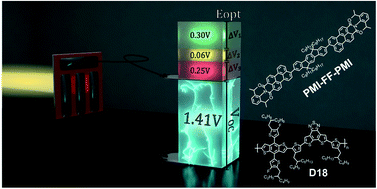
 Ions on the fast track: Interfacial regions in nanocomposites
Ions on the fast track: Interfacial regions in nanocomposites
Interfacial regions between liquids and solids provide fast diffusion paythways for small cations such as lithium. Check out the results we obtained on ionic-liquid-in-salt composites. The effect is only seen with long-time NMR relaxation measurements. Link to the the paper in ACS Phys. Chem. AU.
 Materials for Optical Oxygen Sensing under High Hydrostatic Pressure
Materials for Optical Oxygen Sensing under High Hydrostatic Pressure
In order to provide optical trace oxygen sensors useful for investigating oxygen minimum zones in the oceans, optical oxygen sensors based on indicators immobilized into porous and nonporous matrix materials were investigated in regard to their sensing behavior under high hydrostatic pressure. Researchers from Porous Materials@Work found in their latest paper in Sensors and Actuators B: Chemical a systematic underestimation of oxygen concentration at elevated hydrostatic pressure and a linear correlation of the concentration on hydrostatic pressure in the investigated range allowing for a straightforward correction. Most importantly, the investigated porous sensor materials show high stability up to at least 200 bar hydrostatic pressure. This result constitutes an important information for the realization of commercially available optical trace oxygen sensors. (cs)
The Polymer Meeting 15 will be held in Bratislava, Slovakia in Sept 4-7 2023

